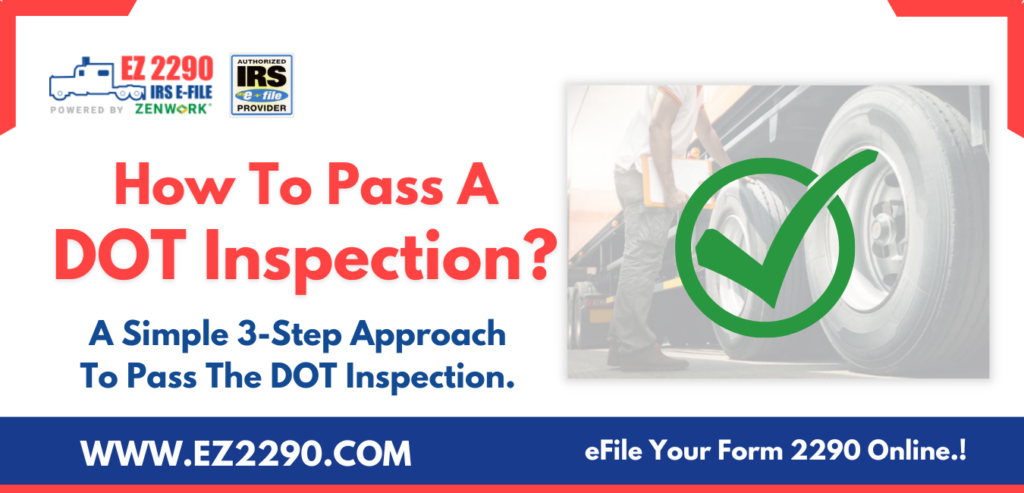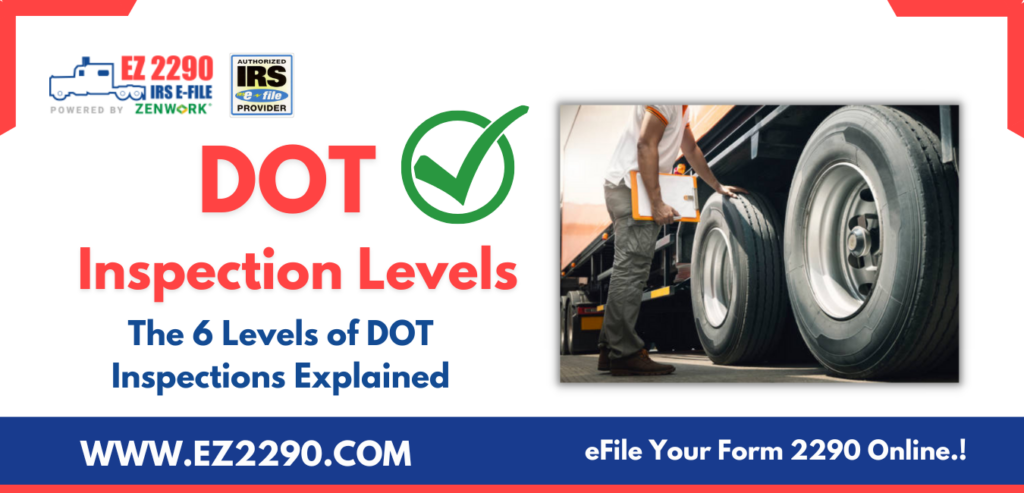
A simple 3-step approach to pass the DOT inspection like a pro.
DOT inspections are a common reality for a lot of truck drivers.
Doesn’t matter if you’re a truck business owner or an owner-operator truck driver, DOT inspections are part of the compliance journey that you have to get used to.
While the process may seem like a nerve-wracking experience for a beginner, it’s actually just a mandatory compliance procedure that every truck driver or trucking business has to pass through.
Consider it a rite of passage. If you could make it to this, you’re probably ready for the next chapter of your highway life.
While passing a DOT inspection is relatively easy, it’s important to consider the downside of failing a DOT inspection.
Why A Failed DOT Inspection Can Be Bad
Now, keep in mind that a failed DOT inspection will cost you an average of $851.
And this excludes the repairs (leading up to the inspection) and fines.
If an inspection concludes that your vehicle violates the ‘out of service’ regulation, not only will you have to worry about a penalty and a ticket, but you can’t use the vehicle on a highway.
This will squeeze your pockets more than a vehicle that’s running on the highway.
This is why truck drivers and trucking businesses alike are very cautious of DOT inspection.
However, remember that a DOT inspection is a simple process and the DOT inspector just wants to make sure that your vehicle is in the -right condition and complies with the highway regulations.
The inspection also makes sure that your driver is physically and mentally prepared to take on the challenges that arise when driving on highways.
So, in order to help you comply with the DOT inspection process, we have put together various approaches which would help you pass the DOT inspection without a sweat.
So, let’s get started.
Start With Your Paperwork
Keep Your Paperwork Organized
This is probably the first step you need to take to ensure that you pass the DOT inspection. Make sure that all the paperwork you need is in the right place.
Checklist of documents you need:
- Record of Duty Status (RODS)
- Driver’s license (commercial driver’s license)
- HAZMAT or Hazardous Material compliance
- Medical card and waiver
- Skill Performance Evaluation (SPE) certificate
- Vehicle Inspection Report
- Hazardous Material & Dangerous Goods compliance
- HOS (Hours of Service) documentation
- Seat belt usage
- Alcohol or drug use history
Update Your Regulatory Information
If any of the documents show information that’s historic or out of date, it’s time to renew the information and keep the paperwork up to date.
This way, you can prevent missed information and avoid showing wrong documentation during the inspection.
Pay Attention To Your Vehicle
Create a checklist prior to the inspection
Conduct a thorough inspection of your vehicle by yourself, or ask for a professional’s help. Get your vehicle “scanned” for any faults and note down all the upgrades and repairs your vehicle needs.
Ensure that the following parts of your vehicle are in the best condition.
- Brakes and exhaust system
- Front windows and external lights
- Vehicle engine
- Vehicle tires
- Suspension elements
- Fuel and brake lines
Make sure that there are no oil leaks and drips on a hot part of the vehicle, and that there is no rust on your vehicle components.
Get the maintenance work done
Once you have a checklist of all the repairs that your vehicle requires in order to be approved as “functional” and “safe”, you need to actually invest in those repairs and maintenance work. It’s best to plan these things ahead before the date of the DOT inspection to avoid stress.
Arrange the necessary funds in advance if your vehicle requires massive repairs or servicing.
Plan the repair work at least a month in advance.
Regularly service your vehicle to avoid the sudden cost of repairs and malfunctioning.
Consider The Realities Of An Inspection
Remember that the DOT inspector is not an enemy
Once the date of DOT inspection does arrive, remember to not stress or worry. There’s nothing you can do at this point to change the outcome. Just be polite to the inspector and greet them with a smile.
Remember that the vehicle inspector is merely doing their job, which is to inspect the vehicle and report back to the DOT.
Be calm and professional
When the inspector asks you questions about your health or history of drug or alcohol use, don’t take it personally. Just answer the questions to the best of your knowledge and don’t overthink your answers.
It’s their job to ask those questions. Inspecting the vehicles and validating the credentials of the driver or the operator is a part of their job.
If you have planned things in advance and got the vehicle repaired right in time for the inspection, most likely, you and your vehicle will pass the inspection.
On the off chance of failing the DOT inspection, don’t worry.
Ask the inspector what needs to be corrected in order to comply. Address those issues and schedule an inspection for another time. This time, make sure that you have everything ready for a smooth inspection process.
To summarize, update and gather your regulatory documentation, get your truck fixed, and stay professional.
And before you know it, you will have permission to use the highways.
Yes, failing a DOT inspection can leave you feeling stressed and anxious. But do you know what else can make it worse? Not addressing your 2290 Heavy Highway Usage Tax obligations.
The IRS requires trucking businesses to file Form 2290 to report certain information about heavy vehicles that utilize the highways for transportation purposes.
EZ2290, an authorized eFile provider of the IRS, enables you to prepare and file your 2290 returns per federal requirements.
EZ2290 features:
- Quick and easy bulk data import
- Real-time TIN matching
- Dynamic form completion
- Automatic tax calculations
- Secure & encrypted eFile transmissions
- Free 2290 VIN Corrections
- Free re-file for rejected returns
- Online options to pay your HVUT with convenience
- Priority 2290 tax support
Get Started For Free & eFile 2290 Now
Other Useful Trucking Related Posts
- DOT Inspection Levels: The 6 Levels Of DOT Inspections Explained
- 5 Ways Fleet Companies Are Effectively Reducing Fuel Consumption
- 5 Ways Transportation Companies Can Increase Driver Retention
- What Is Form 2290 Amendment And How To File An Amended 2290 Return Online?
- Everything You Need To Know About 2290 Suspended Vehicle Category





